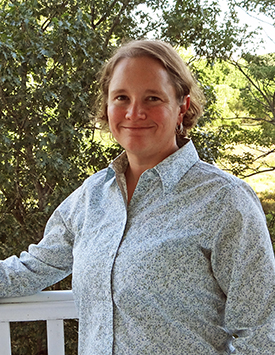For her dissertation, Michelle chose to study Prothonotary warblers where both males and females display bright, yellow coloration. Her dissertation research examined the relationships between plumage coloration and mate choice, competition over nest sites, and determined if plumage coloration was a condition-dependent trait. She also examined patterns of extra-pair mating in Prothonotary warblers and the role habitat features may play in altering the strength of sexual selection. Michelle completed her PhD in 2010 at Washington State University; she worked with Michael Webster and Hubert Schwabl.
In the Hopkins lab, Michelle’s research focused on the interface between conservation biology and behavioral ecology. She examined the effects of trace element contamination from the Kingston coal ash spill on the production of ornamental plumage coloration in tree swallows and the potential effects of the spill on adult reproductive behavior and physiology. She also examined the influence of the spill on nestling development and physiology, including the development of personality.
Michelle is currently a postdoctoral research associate with Kendra Sewall in the Department of Biology at Virginia Tech. She will be addressing the influence of stress on mate choice and early gene expression in the social network center of female house finches. In order to address this question, she is developing a new method to experimentally manipulate corticosterone concentrations and developing an operant conditioning system that can also be used in mate choice trials.
Email
Publications
Beck, M. L., Davies, S., Moore, I. T., Schoenle, L. A., Kerman, K., Vernasco, B. J., Sewall, K. B. 2016. Beeswax corticosterone implants produce long-term elevation of plasma corticosterone and influence condition. General and Comparative Endocrinology 223:109-114.
Gaschnig, R. Rudnick, R. L., McDonough, W., Kaufman, A. J., Valley, J., Hu, Z., Gao, S., Beck, M. L. 2016. Compositional evolution of the upper continental crust through time, as constrained by ancient glacial diamictites. Geochemica et Cosmochimica Acta 186:316-343,
Hopkins, W. A., Fallon, J. Beck, M. L., Coe, B. H., Jachowski, C.M B., Andrew, D. 2016. Hematological and immunological characteristics of eastern hellbenders (Cryptobranchus alleganiensis alleganiensis) infected and co-infected with endo- and ecto-parasites. Conservation Physiology 4: doi:10.1093/conphys/cow002.
Beck, M. L., Hopkins, W. A., & Hawley, D. M. 2015. Plumage coloration, blood selenium concentrations, and immune responses of adult and nestling tree swallows. Journal of Experimental Biology. 218:3415-3424.
Beck, M. L., Hopkins, W. A., Jackson, B. P. & Hawley, D. M. 2015. The effects of element exposure and weather conditions on reproductive success and offspring development in tree swallows following remediation of a fly ash spill. Environmental Monitoring and Assessment 187, DOI 10.1007/s10661-015-4333-9.
Hopkins, B. C., Beck, M. L., Chin, S. Y., Jachowski, C. M. B. & Hopkins, W. A. 2015. Local variation in weather conditions influences incubation behavior and temperature in a passerine bird. Journal of Avian Biology. DOI:10.1111/jav.00581.
Beck, M. L., Hopkins, W. A. & Jackson, B. P. 2014. Variation in riparian consumer diet composition and differential bioaccumulation by prey influence the risk of exposure to elements from a recently remediated fly ash spill. Environmental Toxicology and Chemistry 33:2595-2608.
Beck, M. L., Hopkins, W. A., Hallagan, J. J., Jackson, B. P. & Hawley, D. M. 2014. Exposure to residual concentrations of elements from a remediated coal fly ash spill does not adversely influence stress and immune responses of nestling tree swallows. Conservation Physiology 2 (1): cou018, doi: 10.1093/conphys/cou018.
Van Dyke, J. U., Beck, M. L., Hopkins, W. A., & Jackson, B. P. 2013. Interspecific differences in egg production affect egg trace element concentrations at a coal fly-ash spill site. Environmental Science and Technology 47:13763-13771.
Beck, M. L., Hopkins, W. A. & Jackson, B. P. 2013 Spatial and temporal variation in the tree swallow diet: Implications for trace element exposure following habitat remediation. Archives of Environmental Contamination and Toxicology 65:575-587.
Beck, M. L. 2013. Nest-box acquisition is related to plumage coloration in male and female Prothonotary warblers. The Auk 130:364-371.

